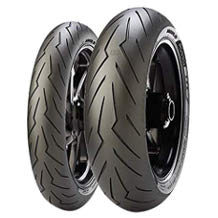All-season tire purchasing advice: how to choose the right product
- What you need to know
- All-season tires are designed for use in dry and hot conditions as well as in wet, cold, snowy and icy conditions and are thus intended to replace winter and summer tires.
- All-weather tires are well suited for short-distance and urban drivers who travel less than 10,000 kilometres per year and do not travel in regions with extreme climates.
- Since 01 January 2018, tires must display the so-called snowflake symbol in order to be approved as winter tires. The previously valid “M+S” symbol is no longer sufficient.
All-season tires – A set of tires for all weathers
“O to O – from October to Easter”, this rule of thumb should remind motorists to change their tires regularly. In spring, the summer tires are used. As autumn draws to a close, winter tires have to be fitted to the car until the temperatures become milder again and it’s back to summer tires. Changing tires twice a year is not only a nuisance, it also costs money. According to a survey conducted by the Motor Vehicle Inspection Association of Freelance Motor Vehicle Experts (KÜS). (KÜS) from 2017, only around one third of seasonal tyre users change their tires themselves. The remaining drivers go to a workshop or tyre dealer for this.
An alternative to the seasonal summer and winter tyres are the so-called all-season tyres, also called all-weather tyres. As their name suggests, they are designed for year-round use.
They combine the typical features of both seasonal tyres. That sounds easier than it is. All-weather tyres have to meet high demands: They have to ensure good steerability and have sufficient braking values both in hot and dry conditions and in wet, heavy rain or slippery and snowy conditions. Accordingly, the tread design of the tyres and their material composition must be matched to cope well with all road conditions and weather conditions.
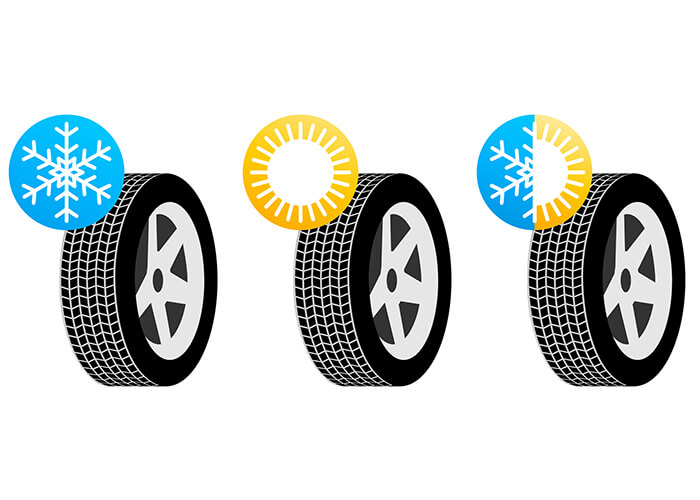
All-season tires on the advance
The advantages of all-weather tyres are obvious. They save their users the time-consuming and often expensive task of changing tyres. In addition, car drivers who use these all-rounders only need one set of tyres. On the one hand, this means lower acquisition costs, and on the other, no storage space is needed for the professional storage of the unused seasonal tyres.
It is therefore not surprising that more and more motorists are opting for the practical all-weather tyres. In the sales statistics for passenger car tyres, the share of all-season tyres is steadily increasing and, according to the ADAC, is now over 15 percent. The fact that demand is increasing has not escaped the attention of the major tyre manufacturers. For a while, Goodyear was rather alone in the all-weather tyre market between small suppliers and unknown third-party brands. In the meantime, other large tyre manufacturers such as Michelin, Continental, Hankook, Nokian, Nexen and Vredestein have jumped on the bandwagon.
The advantages of all-weather tyres:
- No need to change tyres
- Lower purchase costs
- No need to store unused seasonal tyres
For whom are all-season tyres suitable?
In general, all-season tyres are not equally suitable for all regions and all needs. Hybrid tyres are not recommended for regions with large temperature differences between the seasons. They are merely a compromise between seasonal tyres and do not quite come close to good winter tyres in winter road conditions, while they lag behind specialised summer tyres in warm weather.
For example, anyone who spends a lot of time on the road in areas where considerable snow can be expected in winter, such as Austria, Switzerland or regions of Germany close to the Alps, will drive more safely in the cold season with winter tyres.
One disadvantage of all-weather tyres compared to summer tyres is that they are made of a softer rubber compound to achieve better grip on snowy roads, and therefore wear out faster when driving on dry roads. For long-distance commuters or field workers who frequently cover long distances (more than 10,000 kilometres per year) with their car, summer and winter tyres are therefore still the better choice. For drivers who use their vehicle mainly or exclusively for short trips in the city, however, all-season tyres are a sensible time- and cost-saving alternative. All-weather tyres are particularly popular with drivers of micro and small cars: according to a survey by the ADAC, more than half of them can imagine switching to all-season tyres the next time they buy a car.
All-weather tyres are a sensible alternative for drivers who
- are at home in a temperate climate region,
- use their car only occasionally,
- drive mainly short distances,
- drive mainly in the city.
What is the difference between winter and summer tyres?
In terms of construction, summer, winter and all-season tyres are similar. All three have a basic structure, the so-called carcass. It consists of fabric embedded in rubber and holds the tyre together. The sidewall protects the carcass, and the belt and shoulder strip complete it. On the very outside is the tread with the profile. It is the tyre’s contact with the road surface. The following diagram illustrates the general structure of a tyre and shows the most important terms and components:
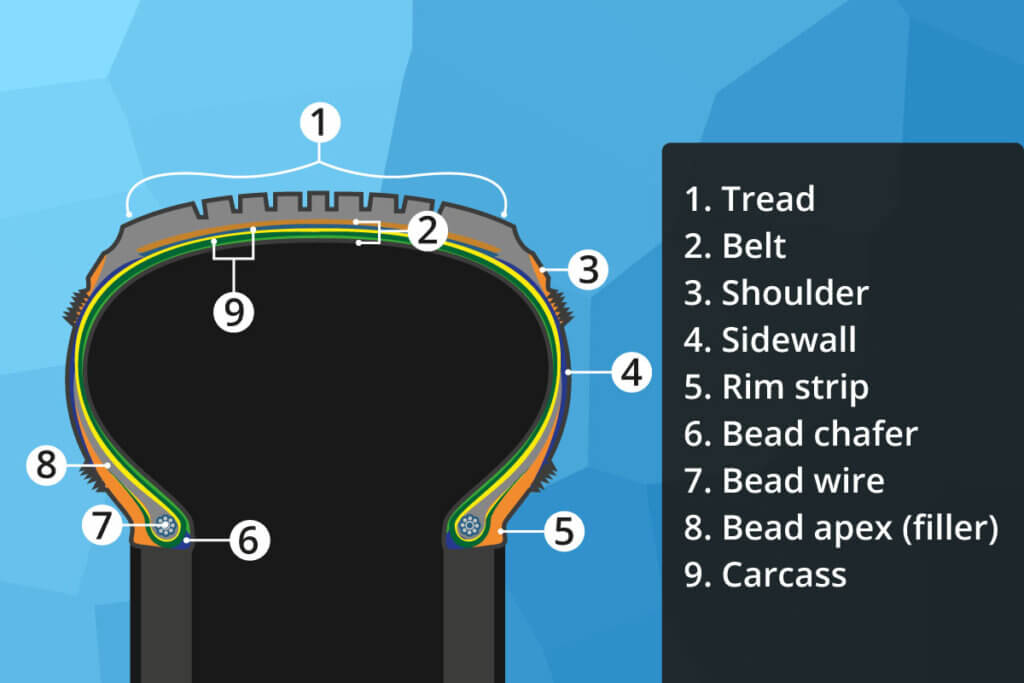
Essentially, summer and winter tyres differ in their tread and the rubber compound used. All-season tyres try to combine the properties of both seasonal tyres in the best possible way. Nevertheless, differences to the specialists remain, of course.
Different treads
The tread pattern is the structure on the tread of the tyre. It is an even pattern of sipes and grooves that influences the driving behaviour in rain and snow.
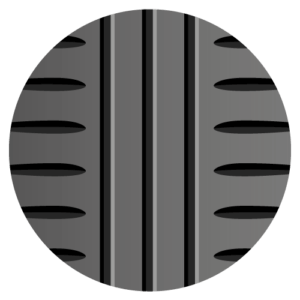
The summer tyre tread
Summer tyres must guarantee good grip on dry and rain-soaked roads and prevent aquaplaning in heavy summer rain. An even groove structure provides the so-called wiping edge effect, which enables high driving stability and short braking distances on wet roads. In heavy rain, several wide longitudinal grooves transport the rainwater as quickly as possible through the tread to the outside and prevent the tyres from losing contact with the road.
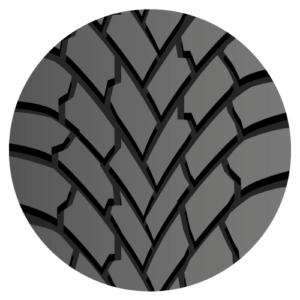
The winter tyre tread
Winter tyres are designed to provide a safe ride on icy and snowy roads and prevent the car from skidding. Their tread is characterised by longitudinal and transverse grooves arranged in a block-like pattern. The arrangement of the deep, wide grooves is designed to prevent snow and ice from getting stuck in them and to maintain good grip. In addition, the tread is equipped with so-called sipes. These are numerous small incisions that interlock with the snow or ice in winter road conditions and thus ensure better grip on the road surface.
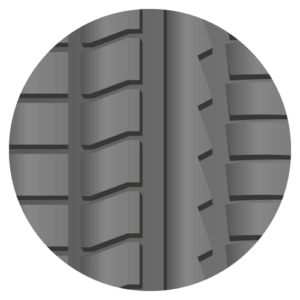
The all-season tyre tread
All-weather tyres try to combine the tread characteristics of the two seasonal tyres as well as possible. Thus, the all-season tyres have the longitudinal grooves typical of summer tyres, which transport rainwater through the tread, on both edges. In the centre of the tyre there are also the tread block serrations and sipes typical of winter tyres, which ensure good grip in snow and ice.
What is aquaplaning?
When the road is covered with water during heavy rain, there is a risk that the vehicle’s tyres lose contact with the ground. The vehicle slides on the water and is no longer controllable for the driver.
How well does the combination work?
The tread pattern of all-weather tyres is a compromise between the summer and winter tread patterns, which do not quite match the respective advantages of the two seasonal tyres. For example, all-weather tyres generally transport rainwater less well than summer tyres and are thus more susceptible to aquaplaning. And because the block-like serrations and sipes are only in the centre of the tyre, grip on snowy or icy roads is less good than on winter tyres. For moderate weather conditions and short distances in urban environments, all-weather tyres are nevertheless a solid tyre base.
Different material compounds
The different types of tyres differ not only in terms of their tread, but also in terms of the rubber compound used.
Winter tyres must remain elastic even in sub-zero temperatures
Winter tyres are made of a rather soft rubber compound with higher proportions of natural rubber and silica (silicon oxide) so that they remain elastic at low temperatures. This ensures short braking distances and high driving stability even in cold conditions.
Summer tyres must not get too hot
The material of summer tyres must withstand significantly higher outside temperatures than that of winter tyres. Therefore, summer tyres are made of a much harder rubber compound with a lower proportion of natural rubber. This ensures the lowest possible rolling resistance on hot and dry surfaces and prevents the tyres from heating up too much at high outside temperatures.
All-season tyres: The compromise
All-season tyres also try to combine the properties of the two seasonal tyres in one tyre in terms of their material mix. Accordingly, the material must not be too soft for use in warm weather and at the same time must remain elastic in sub-zero temperatures – difficult to implement. As with the tread, only a compromise is possible here. All-season tyres are therefore not suitable for extreme temperatures. But even with thick snow and ice on the road, a set of winter tyres no longer helps.
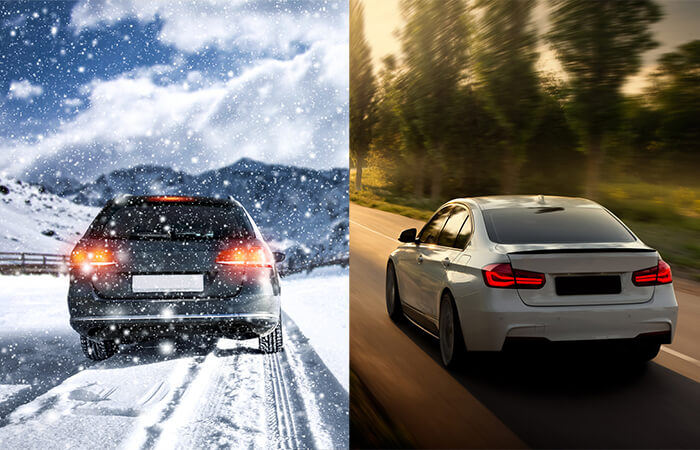
In mild winter weather, however, high-quality, modern all-weather tyres show similarly good braking behaviour as winter tyres. Only traction in curves can still be improved compared to special tyres. Due to their somewhat softer rubber compound, all-weather tyres wear out somewhat faster than summer tyres in warm temperatures. In addition, the higher rolling resistance leads to slightly higher fuel consumption. For short journeys, this should hardly be an issue with good quality all-season tyres.
What is the legal situation regarding compulsory winter tyres in Germany?
In June 2017, a number of new regulations regarding compulsory winter tyres came into force, which caused confusion. Many drivers are only vaguely aware of the current legal situation, if at all.
How is the winter tyre obligation regulated?
There is no general winter tyre obligation in Germany that applies over a certain period of time. “From Easter to October” is merely a rule of thumb. Instead, there has been a so-called situational winter tyre obligation since 2010. According to the Road Traffic Act (§2, paragraph 3a, StVO), this comes into force when the road is covered by “black ice, slippery snow, slush, ice or frost”. Summer tyres are prohibited in the aforementioned road conditions. The vehicle must be equipped with winter tyres.
Which tyres are considered suitable for winter use?
An amendment to the Road Traffic Act provides information on the question of which tyres are now considered suitable for winter and are approved for use on snowy or icy roads.
The M+S symbol will no longer be sufficient in future
Until June 2017, tyres were considered suitable for winter use if they were marked with the M+S symbol. This stands for “Mud and Snow” and is found on the sidewall of the corresponding tyres. The problem with this marking is that it is not protected. This means that the “M+S” symbol is not only found on winter and all-season tyres that guarantee good steerability and adequate braking in winter road conditions, but in many countries also on summer tyres that are not suitable for winter use. So it is high time to replace this symbol with a reliable one.
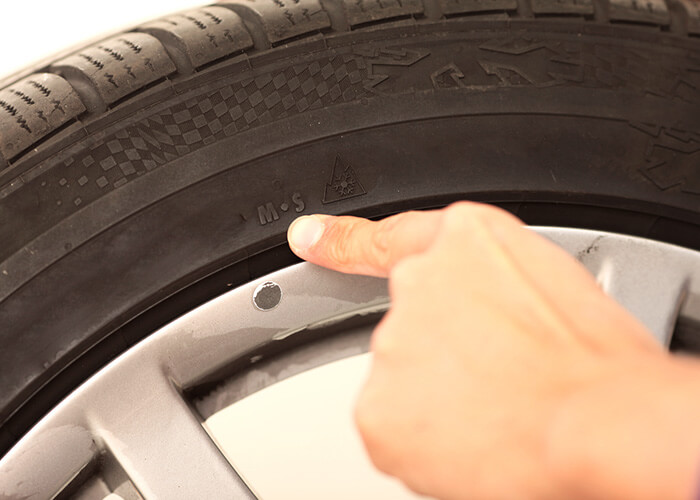
The snowflake symbol becomes compulsory
According to a new paragraph of the Road Traffic Licensing Regulations (§ 36 para. 4, StVZO), since 1 June 2017 only those tyres are considered suitable for winter use that bear the Alpine symbol, also called the snowflake symbol, mountain with snow crystal or three-peak mountain (in short: 3PMSF). This applies to both winter and all-season tyres. In contrast to the M+S marking, the Alpine symbol is subject to uniform test criteria. Tyres that are to be labelled with this symbol must first withstand a comparison with a standardised model in a braking test on snow. Only tyres whose traction on ice and snow in the test is at least seven percent better than that of the average tyre receive the test seal for winter tyres with the snowflake symbol. The test procedure used is recognised worldwide and corresponds to the American industry standard for winter tyres.
The transitional regulation
Drivers whose winter or all-season tyres are still marked with the M+S symbol do not have to visit the nearest tyre shop immediately. There is a transitional phase until 30 September 2024. Within this period, they may continue to use tyres with the M+S symbol that were produced before 31 December 2017 in winter road conditions.
How are violations of the winter tyre obligation punished?
Drivers who do not comply with the winter tyre obligation and are caught on snowy or icy roads with tyres that are not suitable for winter driving must pay a fine of 60 euros. They will also receive a point in the central traffic register. Those who also obstruct traffic with their violation, for example by blocking the road, pay a fine of 80 euros and also receive a point in Flensburg. Drivers who cause an accident due to the use of summer tyres in winter road conditions must also expect considerable reductions in benefits from their comprehensive insurance due to gross negligence.
Another change: vehicle owners who allow or even order their vehicles to be used in winter road conditions with tyres that are not marked with the Alpine symbol will also have to face penalties in the future. According to the amendment, this will result in a fine of 75 euros and a point in Flensburg.
Are there exceptions to the winter tyre requirement?
Exceptions confirm the rule. This is also the case with the winter tyre obligation. The following vehicles are exempt:
- Single-track motor vehicles such as motorbikes
- Agricultural and forestry vehicles
- Forklift trucks
- Motorised ambulances
- Emergency vehicles of the Federal Armed Forces, the Federal Police, the Fire Brigade, the Civil Protection, the Police and the Customs Service, if no winter tyres are available for them due to their design.
- Special vehicles for which winter tyres are not available due to their design.
However, users of these vehicles must check before each journey whether it is really necessary or whether the destination can also be reached by other means of transport. During the journey, they are obliged to maintain a safe distance from the vehicle in front (at least half the numerical value of their speed in metres) and not to exceed a speed of 50 kilometres per hour.
Winter tyres for trailers?
Trailers are not motor vehicles and are therefore not subject to the winter tyre requirement by law. However, the ADAC expressly recommends that trailers should also be fitted with winter tyres for increased safety.
How can I recognise good all-weather tyres?
If you are thinking about buying all-weather tyres, you naturally want the best possible model at a reasonable price. In order for tyres from different manufacturers to be easily comparable, they must be labelled with a so-called tyre label according to the European Tyre Labelling Regulation. Consumers pay between 40 and 150 euros for an all-season tyre, depending on the manufacturer and model. For four tyres, this adds up to 120 to 600 euros. The prices for winter and summer tyres are in the same range.
The EU tyre label: the most important information at a glance
The label is comparable to the energy label of large electrical appliances such as washing machines, tumble dryers or hoovers. It presents a range of important information for the consumer at a glance, so that different models can be easily compared. This includes the following information:
- fuel efficiency
- wet grip
- external rolling noise
There is currently no additional criterion specifically for winter tyres that evaluates grip on snow or ice. However, the introduction of such an additional criterion is currently under discussion.
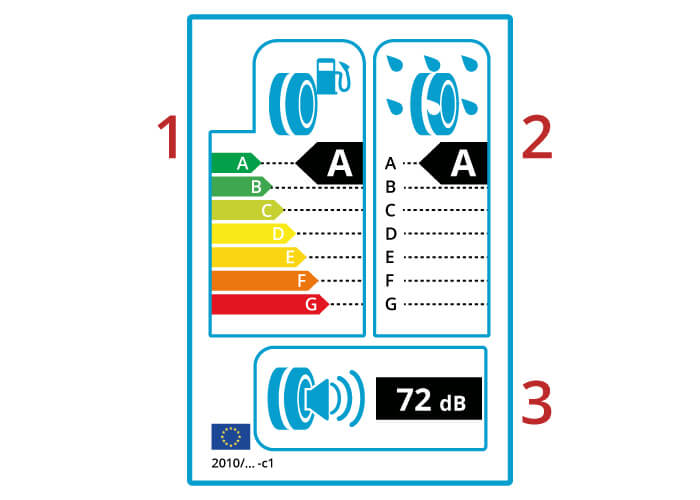
Fuel efficiency: dependent on rolling resistance
What energy efficiency is for electrical appliances, fuel efficiency is for tyres. It is also shown on the tyre label with a colour scale. The scale ranges from class A (highest efficiency) to G (lowest efficiency), whereby class D is not documented.
The rolling resistance is decisive for the fuel consumption. The lower the rolling resistance, the less fuel the vehicle consumes because less energy is needed to move. Consequently, CO2 emissions are also reduced. Drivers who ensure that their tyres are as fuel-efficient as possible not only save money, but also do something good for the environment.
The occupied letters on the fuel efficiency scale each stand for an average of 14 percent less rolling resistance than the next worse class, which goes hand in hand with about two percent less fuel consumption each. Accordingly, tyres in fuel efficiency class A, for example, have a 14 percent lower rolling resistance than tyres in class B and require two percent less fuel. For a passenger car with an average fuel consumption of ten litres over a distance of 100 kilometres, this would be a fuel saving of 0.2 litres.
Wet grip: assessing the braking distance
The second criterion on the tyre label is wet braking performance. It is also given in classes. The scale ranges from class A (best wet grip) to G (worst wet grip), whereby classes D and G are not covered. For the wet grip rating, the length of the braking distance on a watered road is evaluated. The higher the wet grip class of the tyre, the shorter the braking distance on a wet road. The braking distance differences between the five classes are illustrated in the following graph. Overall, the braking distance difference between classes A and F is as much as 18 metres.
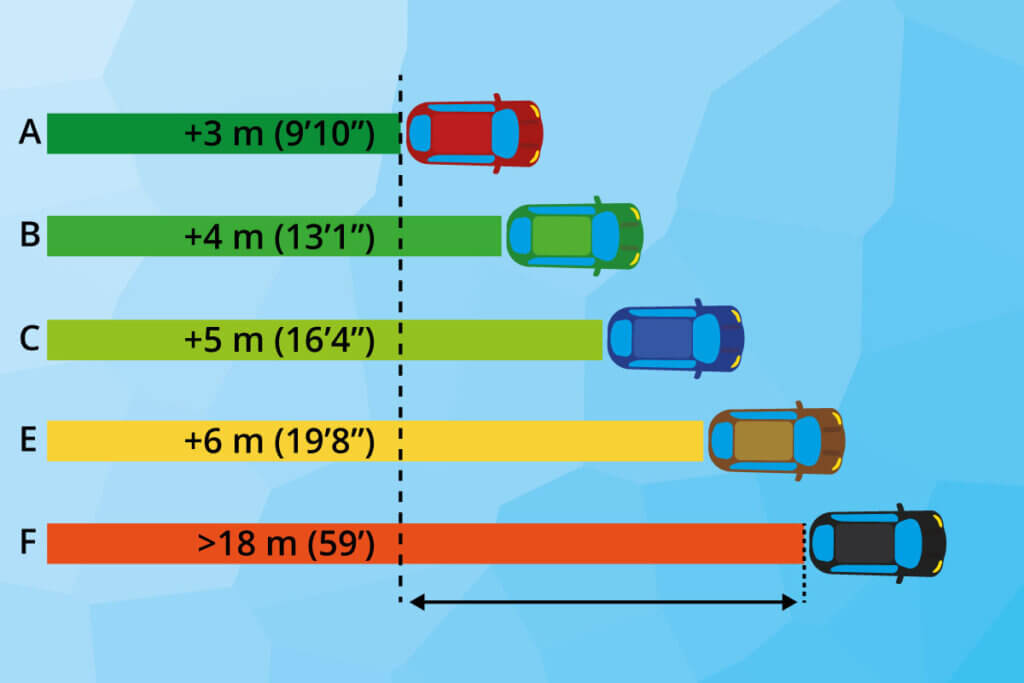
The external rolling noise: How quiet is the tyre?
Since the tyres also cause noise in addition to the engine, the so-called external rolling noise also finds a place on the tyre label. To illustrate the noise level, the respective value is not only given in decibels, but also on a scale in the form of one to three sound waves:
- one sound wave: low-noise tyre
- two sound waves: average tyre
- three sound waves: noisy tyre
The noise class depends primarily on the tyre width. Narrow car tyres, for example, produce only 67 decibels, while wide truck tyres can produce a noise level of up to 76 decibels. Noise emission is of particular concern because it not only limits driving comfort, but also affects the immediate environment. The external noise level is usually higher than the volume inside the driving compartment.
For heavier loads: Reinforced tyres
Reinforced tyres (derived from the English verb “reinforce”) are single-ply reinforced tyres. Specially designed for heavier loads, these tyres are suitable for vans, off-road vehicles and SUVs. Their particularly sturdily manufactured base, in combination with increased air pressure, not only ensures high load-bearing capacity, but also better protection against mechanical damage.
Reinforced tyres are commonly known as XL or EL (Extra Load, i.e. heavy-duty tyres), RFD or “reinf” for short, depending on the manufacturer. But be careful: the abbreviation RF also stands for “Run Flat”, the run-flat tyre, which has nothing to do with a reinforced tyre.
Driving on despite a hole in the tyre: run-flat tyres
Whether caused by a sharp object or an overload – a flat tyre is dangerous and annoying. When a tyre loses air, the weight of the vehicle compresses the tyre so that the tread presses down on the rims. This not only affects the steerability of the car, but may even cause irreparable damage to the rims. To avoid being stranded in the event of a puncture, many consumers opt for so-called run-flat tyres. Tyres with run-flat function enable consumers to continue driving safely even without air, so that neither a cumbersome tyre change nor a makeshift repair is necessary. In the worst case, users of ordinary all-season tyres would have to call for roadside assistance, costing them not only time but also money.
With the help of innovative technology that relies on reinforced sidewalls or rubber support rings on the rims, consumers can make it to the nearest garage even without tyre pressure at a maximum speed of 80 kilometres per hour and a distance of between 80 and 300 kilometres. Mounted on special rims, the emergency tyres prevent a tyre from coming off in the event of damage. So that drivers still know that there is damage, there is a visual signal in the cockpit.
Externally, run-flat tyres look like standard tyres. However, they have a marking on the sidewalls. The abbreviation varies depending on the manufacturer, but in the meantime RSC (Runflat System Component) and RFT (Run Flat Tyre) have become established. One reason why the technology is not used on all tyres is the less comfortable driving experience. Run-flat tyres are harder to drive and consume more fuel due to their higher weight (about 300 grams extra) and the associated increased effort. However, if users choose not to carry a spare tyre, the overall weight of the car is reduced and so is its fuel consumption.
How do I find the right tyres?
In order to know which tyres are the right ones for the respective vehicle, it is helpful to take a look at the previous tyres as well as at the vehicle documents. There you will find the following values, which are relevant for buying the right tyre size:
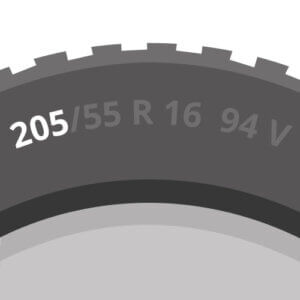
The tyre width
The tyre width specification refers to the widest point. Standard passenger car tyres are usually between 125 and 335 millimetres wide, with size differences graduated at intervals of ten millimetres. However, the actual value deviates slightly from the nominal specifications due to manufacturing tolerances, depending on the manufacturer.
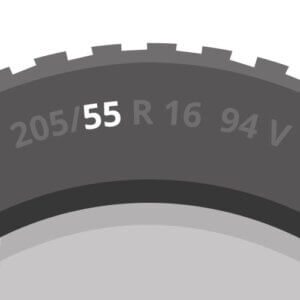
The tyre cross-section
The tyre cross-section, also known as the height-to-width ratio, is given as a percentage. For example, if the colon is followed by “55”, this means that the tyre height is half the tyre width. Here one would speak of “55 tyres” or the “55 series”. The lower the ratio, the lower the tyre sidewall.
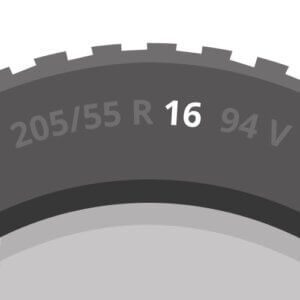
The rim diameter
The rim diameter is measured radially from one rim edge to the other. Usually, the dimensions of common tyres range from 10 to 20 inches. For some wheel tyre systems, such as PAX, TD and TRX tyres, they are also given in millimetres. In this case, the diameters are usually between 315 and 440 millimetres.
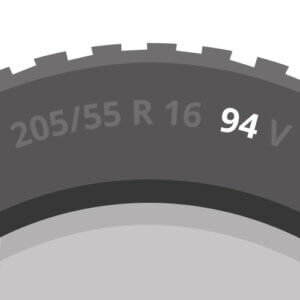
The load index
The load index (LI), also known as the load capacity index or load index, provides information about the load capacity of the tyre at a given air pressure. If the air pressure is about 2.5 bar, this corresponds to a load index value of 90 and thus a load capacity of up to 600 kilograms. A lower tyre pressure is also associated with a lower load capacity of the tyre.
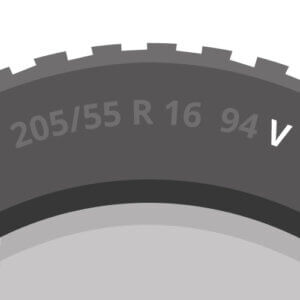
The speed index
The speed index is the value of the maximum permissible speed for the tyres. This is indicated by means of a code letter, each of which stands for a specific speed. For example, the letter F stands for 80 kilometres per hour. As the alphabet progresses, the speed also increases, so that the letter Y, for example, can be used to indicate a value of 300 kilometres per hour.
How long do all-season tyres last and how do I dispose of them?
For safety reasons, it is important to consider the lifespan of car tyres. The timing of tyre replacement is related to mileage and driving characteristics, but also to the age and tread depth of the tyres. At least the seasonal replacement is not required for all-season tyres.
In any case, consumers should change their all-season tyres after six to eight years at the latest, even if they have hardly been used. This is because environmental influences such as UV light, moisture, heat and ozone harden the rubber of the tyres. This reduces grip, which in turn reduces driving safety.
Information about the manufacturer’s date thanks to the DOT number
Although the material properties of tyres change negatively with increasing age, it is still legally permissible to offer tyres as new even after five years, provided they have been stored properly. To prevent consumers from unintentionally buying old tyres, they should take a look at the DOT number (“Department of Transportation”) before buying. This consists of a four-digit number on the tyre sidewall and indicates the age of the model, i.e. its date of manufacture. The first two digits refer to the calendar week and the last two to the year of production. For example, if the number is 4516, the tyre model was produced in mid-November 2016.
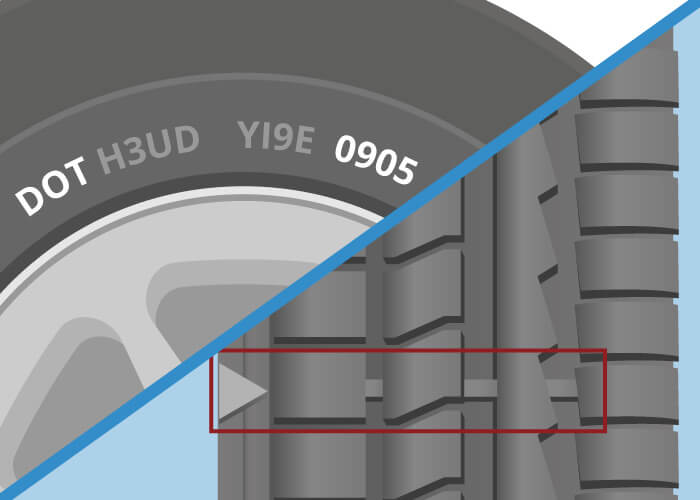
Identifying wear through the Tread Wear Indicator
Another indicator of tyre wear is the so-called Tread Wear Indicator. This tells consumers whether a tyre is already worn or no longer has the legal minimum tread depth of 1.6 millimetres. To make it easier to find, the small ridges in the grooves of the main tread are usually marked TWI. If the indicator and the tread are at the same level, it is time to replace the tyre. Wear is important because the lower the tread depth, the greater the risk of aquaplaning and the longer the braking distance.
Dispose of old tyres properly
All-season tyres, which are made of a rubber compound, do not belong in household waste. But how do consumers dispose of their old tyres in a professional and environmentally friendly way? The easiest way is to go to a tyre dealer. In many cases, the tyre dealer will take care of the disposal when the customer buys a new pair of tyres. There are also companies such as the Renewable Energy Group (REG) that specialise in the proper disposal of tyres. Another option is recycling centres, which only charge a small fee. Finally, some farms or municipalities may be able to find other uses for the tyres.
Image 1: © VRD / stock.adobe.com | Images 2-5: © FinalCheck | Image 6: © magdal3na / stock.adobe.com und © Ivan Kurmyshov / stock.adobe.com | Image 7: © RAM / stock.adobe.com | Images 8-15: © FinalCheck

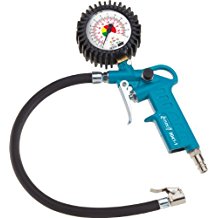
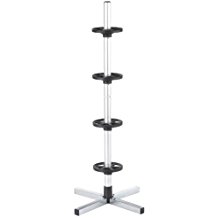
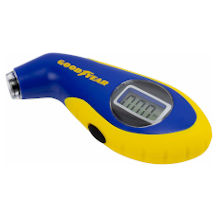
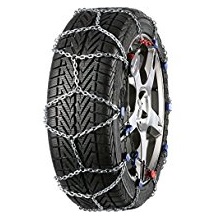
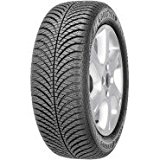
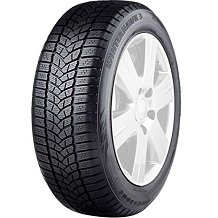
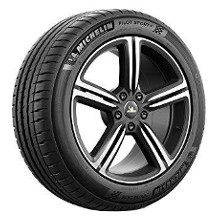
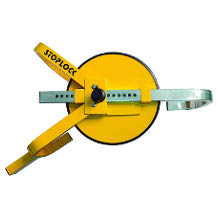
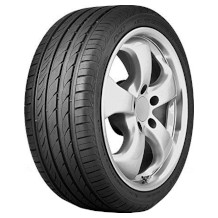
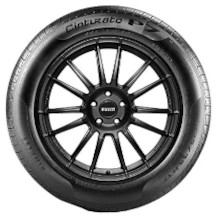
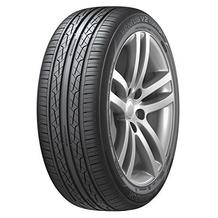
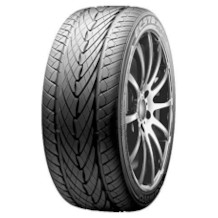

 no reviews
no reviews
